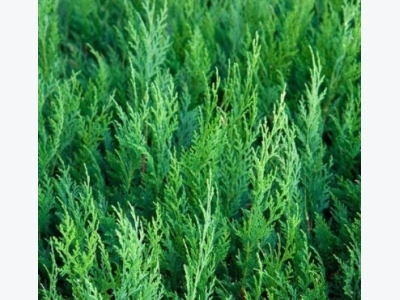How to Grow Cedar Trees

The name cedar is used to refer to several species of upright evergreen trees. These trees have a similar form and use, but their growing conditions vary and they do not belong to the same family.
All of the cedars grow to be fairly large, long-lived trees. They are most often used as screens or hedges in large landscapes. When choosing a cedar, select a species adapted to your area and growing conditions. Pay special attention to the mature size of the tree, since many aren’t appropriate for home landscapes.
In addition to their use in the landscape, cedars have long been valued for their wood. Aromatic cedar wood is naturally decay- and insect-resistant, making it an ideal choice for decking, outdoor gardening projects and for lining closets. Cedars were used historically by Native Americans to make canoes, baskets and weapons. There are hundreds of cultivars of cedars available. Below we highlight a few from each family.
Species and Growing Conditions
California incense cedar (Calocedrus decurrens) is found in USDA plant hardiness zones 5 through 8, although it grows best in zones 6 and 7. This tree has dark green, dense, attractive needles and an upright, narrow form. Native trees can grow to over 200 feet, although most cultivated trees remain around 60 to 80 feet tall and 8 to 12 feet wide. The trees can live from 500 to 1,000 years. California incense cedar grows best in full sun to partial shade. It tolerates some drought and heat, as well as alkaline, sandy or clay soils. It needs some moisture, but doesn’t tolerate wet feet. It doesn’t need a lot of pruning, although you can prune it to maintain a formal shape.
Eastern red cedar is among the most adaptable cedar trees, growing in USDA plant hardiness zones 2 through 9. Eastern red cedar is native to the eastern United States, where it grows everywhere from dry, rocky bluffs to marshy swamps. This coniferous tree grows 35 to 60 feet tall and 8 to 25 feet wide with a conical shape. It prefers moist soil, but is more drought-tolerant than most eastern cedar trees. Eastern red cedar has dark green to bluish evergreen leaves with a scale-like appearance. Plant it in full sun in almost any type of soil. Eastern red cedar tolerates clay, sand, compacted soil and urban pollution. It is also deer resistant and can grow near black walnut trees.
Western red cedar (Thuja plicata) is an arborvitae found natively in the western United States. Western red cedar is a slow-growing, long-lived tree that can reach heights of 200 feet by 20 feet wide. Western red cedar grows best in deep, moist soils. It has scale-like leaves, rather than needles. Plant it on a level area rather than a slope, where it is sometimes prone to blow-over. Plant in partial shade.
Care
Most cedars don’t require a lot of care once they become established. Water them frequently during the first year and during dry conditions thereafter. Prune the trees annually to remove dead branches or branches that are rubbing against each other. Don’t remove the lower branches from the trees. Cedars look best if allowed to take their natural form.
Cedar Tree Diseases
The most common problem encountered with cedars is cedar apple rust, a cyclical disease that afflicts cedars and apple trees, or relatives of apples such as quince and hawthorne. Cedar trees produce galls over the winter. During warm spring rains, these galls swell, releasing orange, gelatinous spore horns. The spores migrate via air to apple trees, where they cause bright yellow spots on the leaves. Damage to the cedar trees is unlikely, but the disease can reduce apple harvests or even defoliate apple trees. Avoid planting eastern red cedars near apple trees and treat vulnerable apple trees with fungicide applications in the spring.
Some species turn brown during the winter. Plant trees that are hardy in your zone and keep them well-watered. Plant in a location protected from fierce winter winds.
By Julie Christensen
Julie Christensen learned about gardening on her grandfather’s farm and mother’s vegetable garden in southern Idaho. Today, she lives and gardens on the high plains of Colorado. When she’s not digging in the dirt, Julie writes about food, education, parenting and gardening.
Có thể bạn quan tâm
 Secrets of Successful Container Gardening
Secrets of Successful Container Gardening Have you ever put together a really beautiful container garden, only to see some plants turn sickly and die after just a week or so?
 Growing Blazing Star (Liatris) Flowers: A How To Guide
Growing Blazing Star (Liatris) Flowers: A How To Guide Garden designers often recommend planting a combination of plants for the most pleasing effect in the garden.
 How to Grow Foxglove (Digitalis)
How to Grow Foxglove (Digitalis) If you dream of a romantic, old-fashioned garden, then foxgloves are sure to top your list. These plants produce spikes of bell-shaped flowers atop low mounds